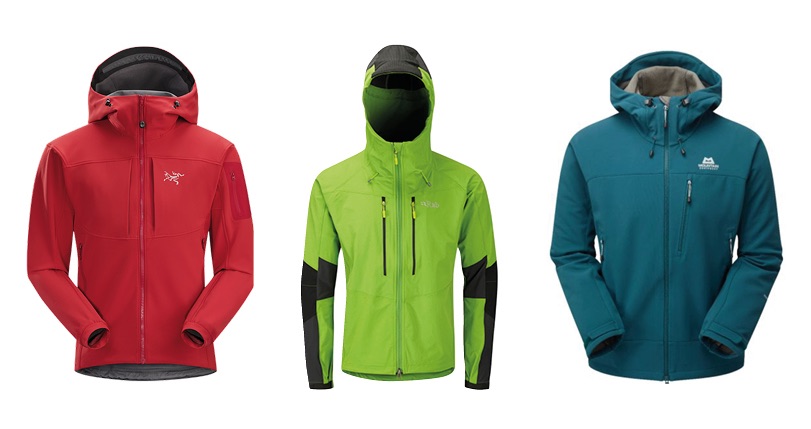Softshell. Or maybe soft shell. An enigma disguised as a riddle, wrapped in a conundrum and spun into the ultimate in confusing outdoor clothing concept. It’s almost easier to say what a softshell isn’t than what it is.
Unlike, say, waterproof jackets which are generally what they say i.e. waterproof jackets, softshells cover a broad spectrum ranging from kit that’s almost completely waterproof but not particularly breathable, through to options that are super-breathable, but aren’t especially weather resistant. Think of it as a continuum where you balance protection against breathability and you won’t go far wrong.
Beyond that there’s also a clue in the name, softshells tend to be softer and stretchier and ‘quieter’ than their waterproof, ‘hard shell’ cousins. And that makes them nicer to use. How do you tell one from another? Here are some basics:
Membrane-based softshell
Soft shells using fabrics based on a membrane are generally pretty much 100% wind proof and very water resistant. The best known fabric at this end of the spectrum is probably Gore’s Windstopper, a sandwich of inner and outer fabrics either side of a membrane. It uses a very similar membrane to Gore-Tex waterproofs, which means that when new the material itself is effectively waterproof, but because the seams aren’t taped, in heavy rain, Windstopper garments will eventually leak along stitch-lines. Polartec’s Power Shield fabric uses a slightly different technology based on a PU membrane, but does pretty much the same thing. Membrane soft shells give excellent levels of weather protection – they’ll usually cope fine with light, intermittent rain and snow – but tend to be less breathable and therefore sweatier and less comfortable.
Tip: Best suited to folk who run cool and want lots of weather protection, but not quite 100% waterproofing.
Woven softshells
At the other end of the protection/breathability continuum, woven soft shells, ‘double weave’ is the buzzword often used in tech speak, are closely woven, usually Nylon/Polyamide fabrics without a membrane. They rely on the closeness of the weave to keep wind resistance high, but don’t use a membrane, so tend to be more significantly breathable and more comfortable than membrane fabrics like Windstopper. That makes them more useable in warmer temperatures particularly if you run hot and move fast. The pay-off is that they’re less water resistant, thought a water repellent treatment means they’ll usually cope with light showers and snow. With use the repellant treatment will wear off in the same way as it would with a waterproof, so be prepared to occasionally re-proof soft shells.
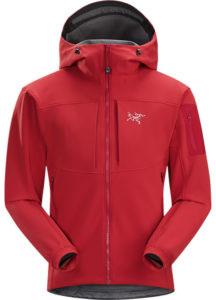
Arguably the best known non-membrane soft shell fabrics are made by Schoeller, but lots of brands have their own versions: Arc’teryx Fortius for example or Rab’s Matrix. One tip: stretch fabrics often stretch because they contain a percentage of Elastane, basically rubber. If a fabric has a high percentage of elastane, much more than 10% or so, it may feel slightly clammy when you get hot.
Tip: Work for people who run on the warm end of the spectrum and are prepared to sacrifice some weather resistance for comfort and breathability.
Weird outliers
It would be relatively straightforward if softshell were just membrane or stretch double weave fabrics, but just to confuse things, there are all sorts of slight random options that may or may not be ‘softshell’. Rab’s Vapour-rise, for example, uses a wind-resistant, but very breathable Pertex outer fabric with a lightweight, wicking liner and works very well. Polartec Alpha is often viewed as ‘insulation’ but lighter versions of it with weather resistant shell fabrics border on being soft shell.
And then there’s Buffalo, sometimes thought of as the ‘original’ softshell concept before the concept itself existed. It uses a pile lining and a wind proof Pertex outer and is super warm and copes brilliantly with cold, damp, winter conditions, think Scotland.
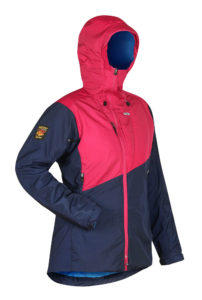
And finally, there’s Paramo’s Nikwax Analogy clothing, which is technically not waterproof, but in practice generally is. All of them just work in their own terms whether you think they’re soft shell or not.
Tip: Quirky solutions for those who aren’t bothered about semantics or categorisation, but get whichever of these works for them.
Features
Quite a lot of technical, mountain softshells are designed in a similar way to waterproof jackets and you can apply the same basic rules: does the hood fit, protect and move with your head when you turn it? Are cuffs and hems adjustable to fit you? Do you have pockets in the places you need them and enough of them to suit your preferences? If you’re planning on carrying your jacket around, is it reasonably light and does it pack down reasonably small? Yes, in theory you put the jacket on at the start of the day and leave it on all day, but in reality it doesn’t always work out that way. Yes pile/Pertex garments, I’m looking at you!
Tip: It sounds obvious, but choose features that match your needs. If you’re primarily a trail runner for example, you probably don’t need lots of pockets and full mountain hood.
Softshell pants
Mostly we’ve been talking jackets here, but stretch double weave softshell fabrics in particular, make great mountain legwear. There’s enough stretch for easy movement. Enough protection to keep you comfortable and they tend to dry fast if they do get damp.
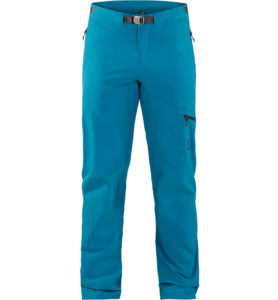
You’ll still need lightweight waterproof overtrousers in sustained wet conditions, but mostly you can just get on with walking, scrambling, climbing or whatever. Finally, soft shell shorts are brilliant things for much the same reasons.
Tip Good for use in most conditions short of full-on deluge weather.
Do I still need a waterproof jacket?
That depends. If you’ve opted for something at the very protective but less breathable end of the soft shell spectrum like Gore Windstopper, you’ll probably manage without a waterproof jacket in light to medium showery conditions and in most snowy scenarios. In heavier rain, you’ll still need a lightweight waterproof shell as your softshell will eventually leak at the seams. With a softshell that sits at the less protective, more breathable end of things, you’ll need to use a waterproof jacket on top of your softshell more often, particularly in sustained rain.
Tip: A packable waterproof jacket is a good call, but hopefully you’ll need it less often and certainly not as an all-day option.
Do some waterproof jackets work like softshells?
The point where softshell merges with full-on waterproof hardshell clothing has started to blur a little recently. Polartec’s NeoShell fabric is as breathable as some membrane-based softshell fabrics, but more water resistant and has taped seams.
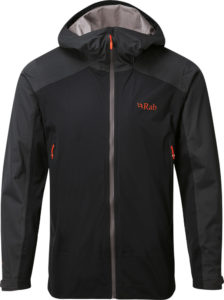
There have also been examples of taped Gore Windstopper – Black Diamond produced a shell of this type a couple of years ago – and Rab’s Kinetic jackets use a fabric that’s soft, stretchy and very breathable almost like a softshell, but still taped. That said, because these fabrics start off less highly rated for waterproofing, they tend to be less long-term durably water resistant than full-on, traditional waterproof fabrics.
Tip: Some new generation waterproof fabrics are starting to rival membrane-based softshell for breathability and use taped seams, but may compromise on outright waterproofing over time.
The bottom line
The easiest way to understand soft shell is to think of it as a range of clothing that stretches from very weather protective, but not spectacularly breathable at one end of the scale. Usually soft shell like this is fully windproof and based on a membrane fabric like Gore Windstopper or Polartec Power Shield. At the other end of the scale are woven soft shell fabrics, often broadly described as ‘double weave soft shell’ which are less weather resistant in general, but as a pay off, are more breathable and consequently more comfortable when working hard.
The trick is to work out where on the continuum you sit. If you’re someone who runs hot and move fast, a more breathable, non-membrane soft shell is probably going to work best for you. If you run cool and want maximum weather protection, though short of full waterproofing, then a membrane-type version is likely to work best. Where it’s harder to choose is if you’re somewhere in the middle – you want lots of weather protection, but need breathability too, in which case you may need to compromise on one or the other – your call.
Finally, keep an eye on what’s happening with waterproof fabrics. Jackets like Rab’s new Kinetic Alpine, for example, give soft shell feel and stretch combined with full waterproofing AND breathability that’s getting close to membrane soft shell. Not perfect, but heading towards the holy grail of a waterproof fabric, that’s as breathable as a soft shell one.
Maybe one day we’ll have waterproof jackets that are comfortable enough to wear all day.


